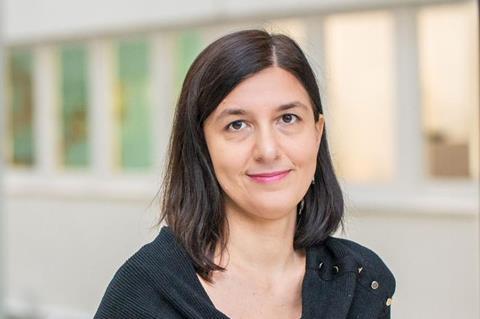A new study demonstrates the ability of the human protein HSF2 to remodel the viral DNA to enable the transition from dormant viral latency to active lytic reactivation.

Both human gamma-herpesviruses, specifically Kaposi’s sarcoma herpesvirus (KSHV) and Epstein–Barr virus (EBV), cause several types of cancer. These viruses establish lifelong persistence in humans and usually remain inactive, or latent, but under certain conditions, they can reactivate and produce new viruses.
READ MORE: Researchers uncover how virus causes cancer, point to potential treatment
READ MORE: Genes combined with immune response to Epstein-Barr virus increase MS risk
This reactivation process plays a key role in viral spread and remarkably contributes to cancer development. However, many of the human factors supporting this switch from viral dormancy to activity remain unknown.
Key player
The team at Abo Akademi University discovered that HSF2, a transcription factor involved in stress response and development, is a key player in this reactivation process. Notably, HSF2 has never previously been linked to any viral life cycle. By increasing the levels of HSF2 in virus-infected cells, the researchers observed a boost in viral gene activity. Conversely, reducing HSF2 levels led to a significant drop in viral gene expression. The team also found that HSF2 binds to key viral genes and helps make their chromatin environment more “open,” allowing the virus to activate these genes more easily.
“This research resulted from a collaboration with the Sistonen Research Group, highlighting the importance of synergistic cooperation and open scientific dialogue to expand the horizon of scientific findings,” says Lorenza Cutrone, first author of the study and Second year PhD student at Åbo Akademi University.
Research debut
This publication also marks the first scientific contribution from the Viral Oncogenesis research group. The team reports being positively surprised by how quickly the project came together, describing the result as an encouraging and stimulating start to their research journey.
The study was financially supported by the Finnish Society of Sciences and Letters, Mary and Georg Ehrnrooth Foundation, K. Albin Johansson Foundation, South-West Finland Cancer Society, Sigrid Jusélius Foundation, Cancer Foundation Finland, The Medical Foundation Liv och Hälsa, the Research Council of Finland, and the Finnish Cultural Foundation. The results were published in PLOS Pathogens, an open-access journal publishing ground-breaking works in the field of pathogen biology.







No comments yet